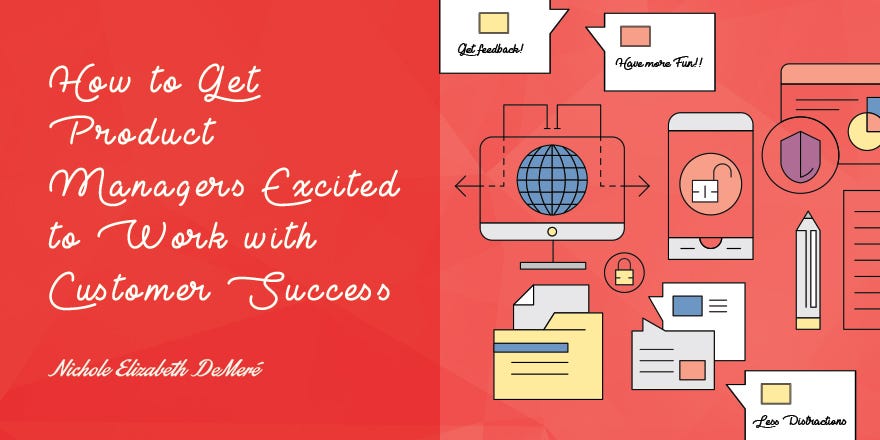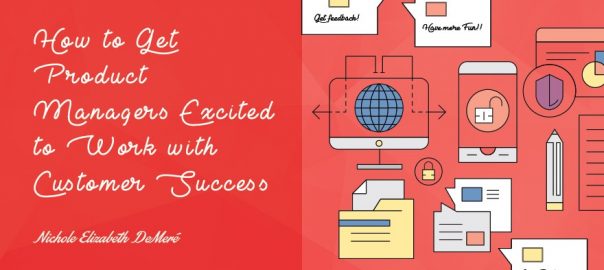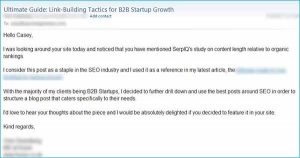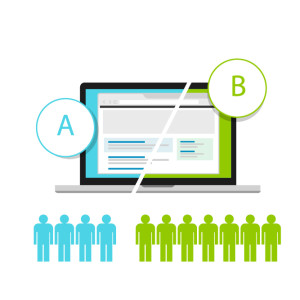
Image created by Yasmine Sedky (@yazsedky).
A Customer Success team is only as good as its information. After all, if they waited until the customers told them what’s wrong — they’d be Customer Service. In order to take a proactive role in helping customers achieve their desired outcomes, Customer Success has to know:
- Their customers — what they want, what they need, and how to bridge the gap between what your product does and this desired outcome.
- The onboarding process — where new customers tend to get stuck, where they drop out, and what can help them get over those hurdles instead of churning.
- Usage — how well is the product working for the customers? Where they stop using it. What they’re hoping to find — and don’t.
- Growth opportunities — when the customer will benefit from using more of the product, or an additional feature. Basically, when it would serve their interests to upgrade.
Customer Success is Who covers the What, Where, How and When — but my question is:
Why aren’t other departments clamoring at their door for these insights too?
These are insights that can benefit the entire company, reducing churn, raising revenue, and giving the business every piece of information it needs to become an integral part of its customers’ lives.
But, most of us come from a tradition of strict departments. You do your thing; I’ll do mine. Which, along with a combination of territorialism and downright inefficiency, leads to data silos.
These are MY numbers and nobody else can have’m!
And I’m sure some companies have good reasons for keeping everything compartmentalized — but when you have a Customer Success department which, naturally and necessarily, has its finger in every pie, it’s absurd not to use them as the resource they are.
But I’m preaching to the choir.
Most of you reading this are Customer Success. So you don’t need me to tell you how important your insights are or how much good they could do.
You need a way to get your insights heard.
Because you can’t give your customers what they need by yourself.
You need Product Dev.
This is about how to form that partnership in such a way that Product Managers become more interested in what’s going on with the customer and want to get involved — instead of staying one step removed.
Bridging the language barrier
What gets people excited? C’mon, you know this: Achieving their ideal outcomes. In this, product managers are no different than anyone else. They have goals, and to win them over, you need to show how working with you can help them reach those goals faster.
But you have to do some work too, because to get the most out of this relationship, you’re going to have to establish a common language with Product, one which surfaces your insights in ways they can easily consume.
This is harder than it sounds.
You might want to keep a list of Product’s most-used acronyms and jargon handy, just for translation purposes.
Product managers and engineers have a very different way of communicating than touchy-feely Customer Success agents. We’re all about creating “delight;” they’re all about creating… the product. It’s a different mindset and a different vocabulary. Just like a good marketing campaign, lead with benefits to them (rather than the customer). And put them in bullet points with metrics if possible.
Persuasive Benefit #1: Do better work, more efficiently
Customer Success data can pinpoint the trouble spots that matter most — the ones creating the most churn, and churn-predictive behaviors. But CS can’t fix these problems themselves; they depend on Dev to come up with the solutions. What CS can bring to the table is a customer-centric priority list, with items placed in order of impact: Large to small.
When optimizing websites, Dev teams typically like to do the biggest impact, easiest-to-implement steps first. While you might not be able to tell which will be easiest to implement (they’ll be sure to let you know!), you can identify the impact part.
And, you can work together to come up with metrics to measure the success of the proposed improvement in the A/B testing process.
Just be careful that what you think should be a “simple” change isn’t actually asking for an overhaul of the entire website. That’s where improving communication between CS and Dev teams comes in; let them know you’re not making demands, just suggestions (and have them tell you if your suggestions involve far more effort than they’re worth).
Example: Design onboarding for greater retention.
Product managers are often in charge of designing onboarding processes, but they typically approach it from a “let’s teach the customer how to use our product” angle.
Using the wealth of information gleaned from content marketers, as well as the content marketers’ talents for crafting informative, easy-to-read content, product developers can tackle onboarding from this perspective instead: “Let’s teach the customer how to use our product to achieve their specific, desired outcomes in the real world.”
Notice that it’s the customer’s desired outcome that is the key — not what you think represents the customer’s successful use of your product.
Essentially, you’re all working towards the same goal: Delivering the outcome that is the reason the customer hired you in the first place. You can help Dev bridge that gap by understanding what the customer wants (and making sure it aligns with what they truly need).
Persuasive Benefit #2: Be less distracted by support tickets
This might be your biggest selling point — there’s nothing that drives product managers crazy like handling “technical” support tickets… unless it’s unnecessary/unrealistic feature requests. If you can alleviate these pain points, you’ll make friends for life.
The problem: When Customer Support can’t solve a “technical” issue, support tickets become Dev’s problem.
The solution: With Customer Success proactively predicting the most common issues ideal customers have, support tickets on the Dev desk will become increasingly rare.
The problem: When support tickets rise en masse, many CEOs hit the PANIC button (which is directly linked to the Product Dev desk).
This sends Dev into a flurry of activity (disrupting what they were doing), and the guessing game begins: What if we built a new feature? What if we did one big update? What if we asked each departing customer why they’re leaving and solved ALL of those issues?
It’s the fast track to the dreaded “next feature fallacy” and the “Product Death Cycle.”
The solution: Customer Success insights prevent PANIC mode altogether, partly by being aware of issues before they result in churn, and partly by understanding that some customers weren’t meant to be yours in the first place.
Persuasive Benefit #3: Receive pre-organized, well-thought-out feature requests (instead of becoming a feature idea dumping ground)
The problem: All problems seem to become feature requests, which aren’t prioritized logically or efficiently.
The solution: Customer Success already builds out ideal customer profiles, in which the ideal customer’s pain points and ideal outcomes are recorded. It’s not a great leap to also create user stories that help Dev answer the question, “Why are we doing this?” and prioritize accordingly.
User stories are one of the best tools to help product teams stay focused on what’s really important — they’re a “visual reminder that whatever you’re working on, with any luck you’re doing it to improve someone’s life” (so says Basheera Khan on MindtheProduct).
“By phrasing our plans in the context of another person’s life, we can understand both what we’re doing, and why. And given that the user story provides a start and steer for the conversation around solving that particular problem, we can determine whether or not there is any value to doing it in the first place.” — Basheera Khan, MindTheProduct
In fact, Success can even take on some of the burden of prioritization, using user stories, as long as it’s part of a group effort — everyone has to agree to a unified scheme based on user impact, effort required and company priorities.
You can help get everyone on the same page by creating these user stories in the format that Dev is already used to using, effectively building a bridge between your teams in the form of a common language.
Persuasive Benefit #4: Get feedback you need, not the kind you don’t
Customer Success can help connect Dev with the *right* kind of customer feedback on updates, new features and beta editions.
The “right” kind of feedback comes from ideal customers, the people who fall neatly into your user story, the ones your product is uniquely intended to serve. Too often, the wrong kind of feedback makes its way to the Dev desk, and it comes from asking the wrong people.
The wrong kind of feedback can lead to wasting time on features that don’t serve your target audience.
Customer Success has already identified ideal customers, because they’ve been building strong relationships with them all along. That means they know who to survey, and when they send the survey (or ask for interviews, or send beta tester requests), they’ll get higher response rates. All of this allows Success to get constructive feedback more efficiently, and more accurately, on what is and isn’t working.
Persuasive Benefit #5: Have more fun
What do I mean by fun?
Show Product Dev how their hard work impacts real people. Share customer stories and anecdotes. Share your numbers and stats. Celebrate successes.
Too often, Dev is removed from the effects of their work. They don’t get to see the end users succeeding. They don’t see how what they do makes peoples’ lives better.
This is a vital element to engagement and a big part of enjoying what you do.
So give Dev credit where it’s due, and introduce them to the customers they’re really working for.
The Partnership Between Customer Success and Product Development Benefits Everyone
When Customer Success and Product Dev come together, the ripple effect is astounding.
Customers benefit, because their needs are being met more accurately and more efficiently — and happy customers stick around.
Which means that the company benefits, because you’re effectively maximizing lifetime value (aka. minimizing churn), which leads to growth.
- According to Bain and Co., a 5% increase in customer retention can increase a company’s profitability by 25% to 95%.
- In a study of over 500 SaaS companies, Patrick Campbell, CEO and Founder of ProfitWell, found that increasing retention had a 6.71% impact on a company’s bottom line — compared with acquisition, which only had a 3.32% impact.
- Gartner Group found that, on average, 80% of a company’s future profits come from 20% of their existing customers.
And, of course, you benefit. When Dev has your back, there’s nothing you can’t accomplish.
Business & Finance Articles on Business 2 Community(66)







